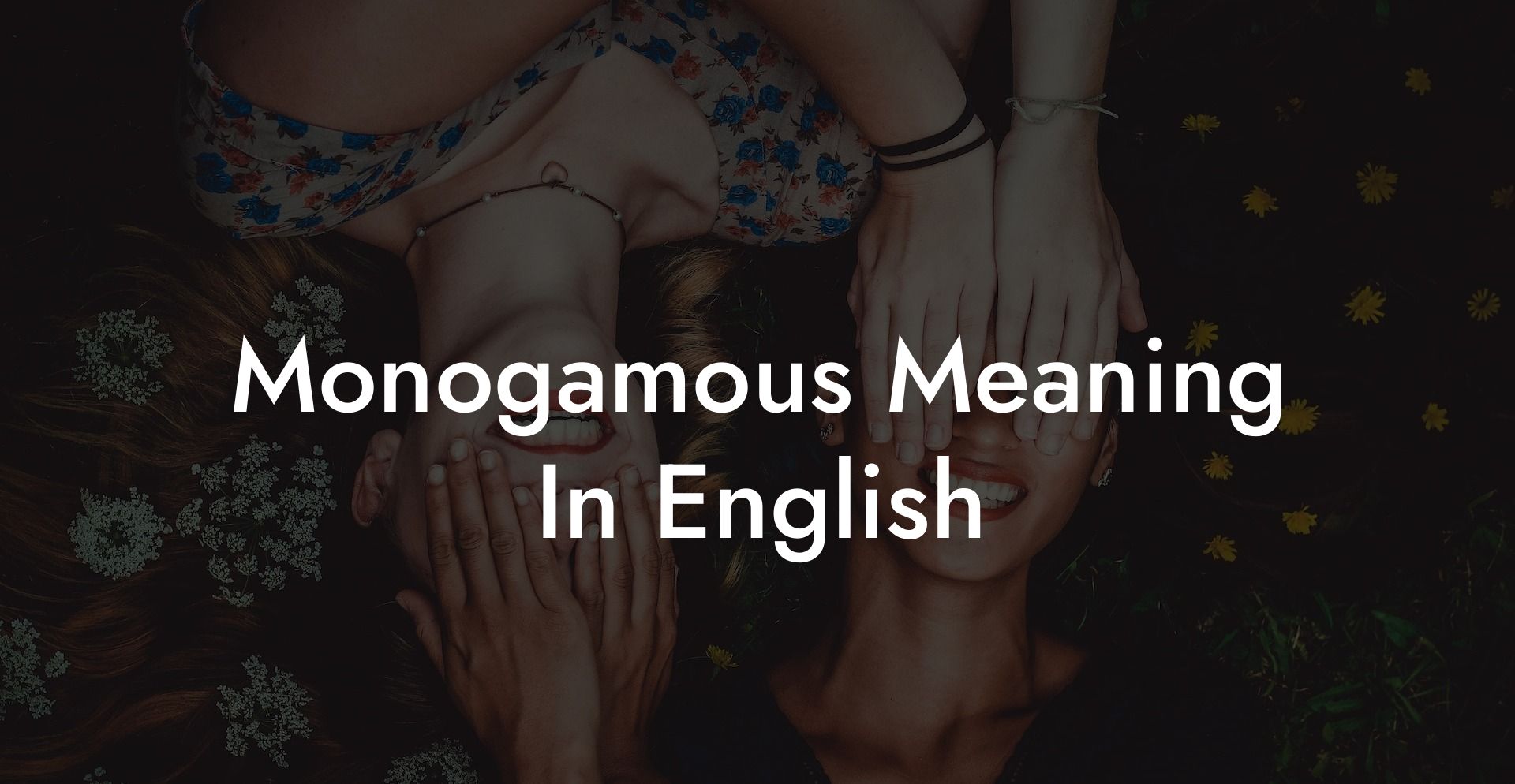Monogamous relationships hold a special place in our society – they're so deeply ingrained in our culture that it's hard to imagine any other type of relationship being the norm. But what does monogamous really mean? Is it synonymous with life-long commitment, exclusive love, or just a societal expectation that we're meant to adhere to? In this article, we will dive into the true meaning of monogamous in the English language and explore the different aspects of monogamy to better understand its significance in our lives.
Monogamous Meaning In English Table of Contents
Definition of Monogamous
According to the Oxford English Dictionary, the word “monogamous” is defined as “the practice or state of having a sexual relationship with only one partner.” It is derived from the combination of two ancient Greek words: monos (single) and gamos (marriage).
The Different Types of Monogamy
Monogamy can involve various facets, depending on the context and individuals involved:
- Serial Monogamy: A pattern of engaging in a series of monogamous relationships, where the individual remains exclusive to one partner at a time but eventually moves on to a new partner, either due to break-up, death, or another reason.
- Sexual Monogamy: This form of monogamy focuses strictly on the physical aspect of a relationship, meaning both partners commit to having sexual relations solely with each other.
- Social Monogamy: In social monogamy, a couple shares a social life and forms a strong emotional bond, but may not necessarily be sexually exclusive to each other.
- Marital Monogamy: This type of monogamy refers to the legal and social institution of marriage, where two people are committed to each other in a legally recognized union.
The Evolution of Monogamy
Throughout history, monogamous relationships have evolved alongside societal values and norms. In ancient civilizations, such as ancient Rome and Greece, monogamy was often not the default relationship structure. Polygamy and other non-monogamous practices were quite common.
In the Middle Ages, the concept of monogamy became more prevalent thanks to the influence of Christianity and its emphasis on monogamous marriage as the ideal form of partnership. Over time, monogamy became the accepted norm in Western society, although other relationship structures continued to exist in different cultures.
In recent years, a growing number of people are questioning and reevaluating traditional monogamous relationships, with the rise in popularity of polyamory, open relationships, and other forms of consensual non-monogamy.
Challenges and Benefits of Monogamy
Monogamous relationships offer certain advantages, such as stability, commitment, and a deep emotional bond between partners. However, these relationships can also face unique challenges:
- Jealousy and possessiveness
- Strained communication
- Unmet emotional or sexual needs
- Infidelity
A strong and healthy monogamous relationship requires communication, trust, and mutual respect to overcome these challenges and maintain a satisfying partnership.
Monogamous Meaning In English Example:
Consider a couple, Sarah and John, who have been in a monogamous relationship for four years. They remain sexually exclusive to each other but find that maintaining an open line of communication has been crucial in discussing their individual needs, handling any jealous feelings, and maintaining a strong bond.
When Sarah once developed a crush on her coworker, she openly shared her feelings with John, who appreciated her honesty. They engaged in open communication and established boundaries to work through the situation, eventually strengthening their relationship and successfully maintaining their monogamous commitment.
In conclusion, monogamous meaning in English sheds light on a fascinating and complex aspect of human relationships. Despite challenges, monogamy continues to be the default relationship structure for many. It is important to understand and respect the diverse relationship styles that exist while also embracing open conversations about monogamy and its role in our lives. If you found this guide enlightening, please consider sharing it in your circles and exploring further into the world of relationships through our other engaging guides on The Monogamy Experiment.













